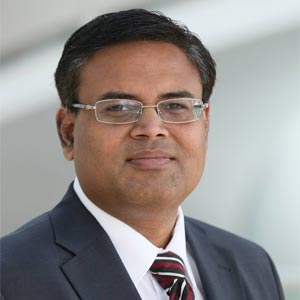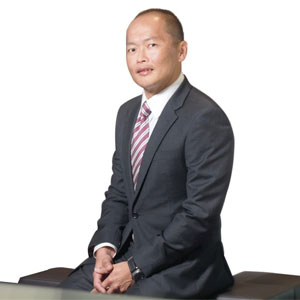THANK YOU FOR SUBSCRIBING

Breaking the Traditional IT Model in the Pharmaceutical Industry
Michael Smith, CIO & Head of Global Business Services, Mylan Bertek Pharmaceuticals


Michael Smith, CIO & Head of Global Business Services, Mylan Bertek Pharmaceuticals
Businesses today face many obstacles that are increasingly challenging, complex and immense in scale. IT must redefine its role in business and move beyond simply being a support to organization, or we will not survive.
We must dispel outdated notions that we cannot be strategists or catalysts for innovation. We must become active and engaged partners with the business in pursuing the strategic missions of our organizations. But the question is how? Shifting the traditional IT paradigm is a monumental undertaking for any CIO. However, many of my colleagues view delivering the next generation of IT within a pharmaceutical company to be particularly challenging due to the highly-regulated nature of our business.
I joined Mylan in December 2012 and it had undergone tremendous growth in the years prior and was beginning to outgrow what its existing IT organization was capable of providing. It was imperative that we transform IT to ensure Mylan could continue on its growth trajectory and meet its targets.
The following are some of the first questions I asked myself when I became CIO at Mylan. And although our journey continues, I am confident that we started the transformation of Mylan’s IT organization on the right path by asking the right questions upfront.
Question 1: Is my IT Strategy Aligned with my Company’s Strategy? IT organizations, usually with the best of intentions, are so focused on serving other functions, they forget to step back and ask if the solutions they are providing are bringing true value to the company. They often find themselves building point solutions that may or may not be advancing the most important business objectives.
One of the first priorities at Mylan was to rethink our IT strategy to ensure it was aligned with the company’s strategy. Once our new IT strategy was down on paper, we made sure that every new capability we delivered and every decision we made as an IT organization aligned to our company’s strategic imperatives.
If your IT strategy is aligned with your company’s strategy, then you have the building blocks necessary to begin demonstrating true business value in the work your IT organization is doing.
Question 2: Does my IT Portfolio Drive Business Value?
We began by taking inventory of our existing technology portfolio. What solutions were we deploying? Who were our vendors and partners? Where does our team spend their time? We evaluated the business value and strategic importance of every dimension of our portfolio and prioritized accordingly. A prioritized portfolio enabled us to free up resources that were reinvested in new capabilities or given back to the bottom line.
Whether it is consolidating technology delivery partners, maximizing software and hardware investments, or divesting non-value added activities, you may be surprised at the opportunities to reduce the cost of simply keeping the lights on within your IT organization.
Once we had a clearer understanding of our existing portfolio, we implemented a formal portfolio management process for investing in new capabilities and innovation. We also developed an enterprise architecture to ensure that prospective solutions are designed from the outset to be integrated and sustainable.
We focused on creating a truly integrated enterprise that supports the seamless flow of information and analytics to give IT, and our business partners, a distinct competitive advantage. With our new strategy and approach in place, our portfolio in order, and a clearer path for moving forward, we could begin sharing our goals and accomplishments as an IT organization in terms that our business partners could appreciate.
First and foremost, we made sure that every IT employee understood his or her role in supporting our new organization. Our IT employees are our greatest asset, and we viewed each and every one of them, at all levels, as ambassadors for Mylan IT.
We challenged them to become better storytellers with their business partners and have the right conversations that were anchored in business objectives. At the end of the day, we wanted our IT employees to be able to speak the same language as the rest of the business.
Question 3: Do my Employees have the Necessary Skills to Deliver on New IT organization’s Promises?
You need to take a close look at the skills that will be essential within your new organization to deliver on your strategy. If there are gaps, are you able to tap into your existing workforce to fill them? If you need to look outside, how can you identify and attract top talent?
Our new organization required our IT employees to be more creative, organizationally aware, process driven and business results oriented. We needed them to focus less on identifying solutions to isolated problems for our business partners and more on delivering end-to-end capabilities that deliver business value for the enterprise.
We have made a concerted effort to develop these new skills within our existing IT workforce wherever possible. However, there are certain skill sets and areas of expertise essential to our new organization that does not exist internally. We had a great story to tell at Mylan and were doing some pretty innovative things, but we recognized that we needed to rethink how we attracted, developed and retained world-class talent within our new IT organization.
We are approaching attracting and retaining IT talent in a very unconventional way for a pharmaceutical company. We established a cross-functional team that focuses on identifying top talent and ensuring the experience of being a Mylan IT employee is exceptional. We began leveraging social media to create awareness about IT opportunities at Mylan. We also focused on building stronger relationships with colleges and universities. We kicked off a series of hackathon competitions in partnership with area schools and engaged in capstone projects with Carnegie Mellon University.
If you focus on fostering a learning culture, developing your employees, attracting new talent, and rewarding the results and behaviors that move you closer to your goals, then you are setting yourself up to have a high performing IT organization.
Weekly Brief
I agree We use cookies on this website to enhance your user experience. By clicking any link on this page you are giving your consent for us to set cookies. More info
Read Also
Artificial Intelligence - Myths And Truths
Sustainable Future through Innovative Technology Solutions
The Future Relies on Augmented AI
Digitalization with the use of digital technologies/Improving business through digital technologies
How Marco's Pizza Leaned On Technology To Succeed Amid The Pandemic By Quickly Pivoting To Contact-Free Delivery And Curbside Carryout
Bunnings Diy Digital Transformation
For a Smarter City: Trust the Data, Ignore the Hype
Smart Community Innovation for the Post Pandemic





















